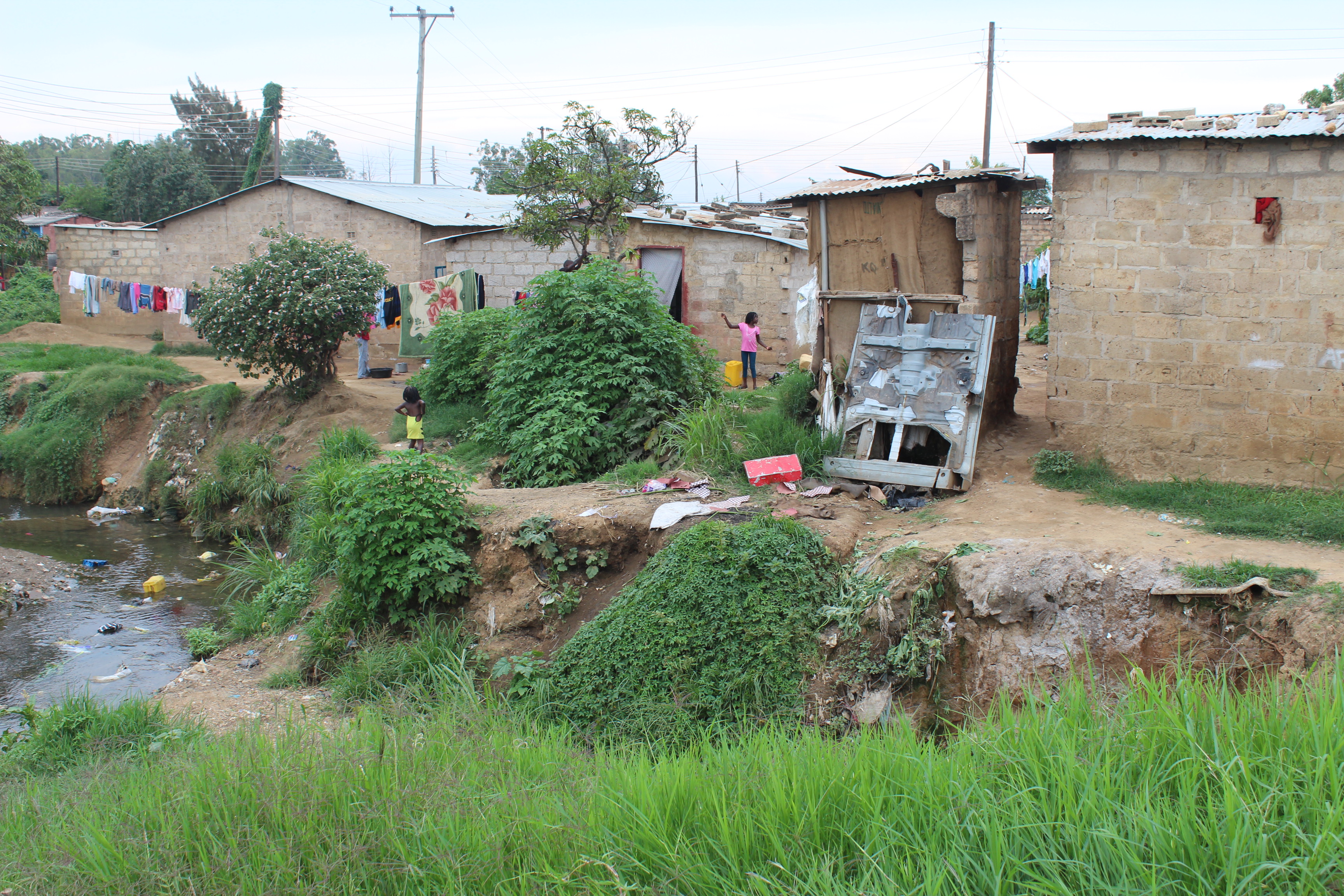
MCA-Zambia
Poor sanitation and drainage conditions threaten health in a community on the outskirts of Lusaka.
The Millennium Challenge Corporation’s $354.7 million compact in Zambia will build water, sanitation and drainage infrastructure in greater Lusaka’s poor communities. The challenge, though, is ensuring that the projected benefits reach the poor. Recognizing that this means addressing the complex social dimensions in those vulnerable communities, MCC is putting great effort and resources into a holistic approach to these projects.
MCC’s Lusaka Water Supply, Sanitation, and Drainage (LWSSD) project must address not only the engineering complexities of building water and sewer networks in dense, under-planned neighborhoods, but also the social and economic complexities of getting people connected, keeping them connected and bringing about the behavior changes necessary to enable and sustain the intended benefits.
The cases of the “white elephants,” as referred to by one Zambian water and sanitation regulator – where water or sewer networks are built but lie unused because people do not connect or stay connected – happen because not enough focus is placed on the importance of social dimensions of planning for water and sanitation service delivery.
A global literature review commissioned by MCC found that the rate of household network connections is significantly increased when infrastructure is combined with well-designed and executed information and education campaigns that address the why and how of connecting, accompanied by policies that make connections affordable, such as pre-financing and permitting repayment over time. A tariff structure that addresses affordability and social equity principles is also important.
The LWSSD project involves mostly infrastructure but is also strengthened on the institutional side with initiatives that improve the long-term ability of the Lusaka Water and Sewerage Company to manage aspects of service planning and delivery. Some of these aspects include developing policies and planning tools that ensure the integration of social and gender inclusion across the utility, and improving the utility’s capacity to design and implement information and education campaigns on connecting and staying connected; household water management; care and maintenance of facilities; hygiene; keeping drains clean and safe; and employment opportunities in the sector. The goal is to support the utility in adopting best-practices, so that Zambia’s most vulnerable populations can access affordable services and be able to rely on these services into the future.
While the challenges are immense, the ultimate ability of the infrastructure project in Zambia to meet its objectives is dependent on addressing these social dimensions.

